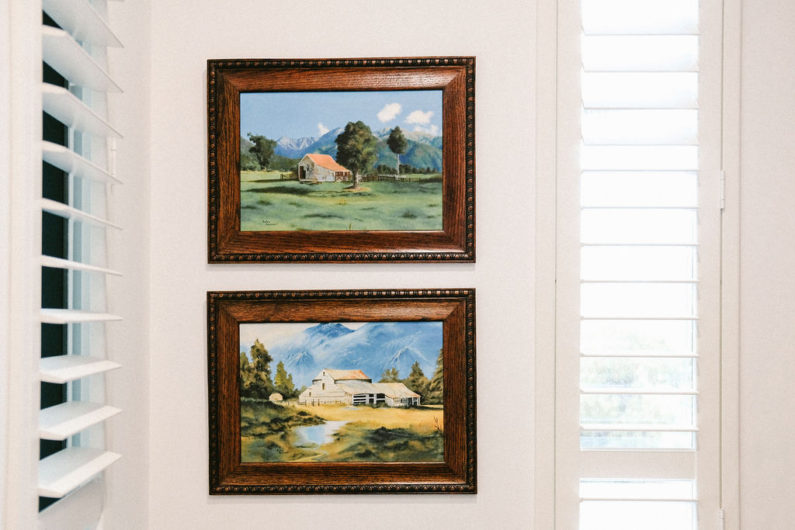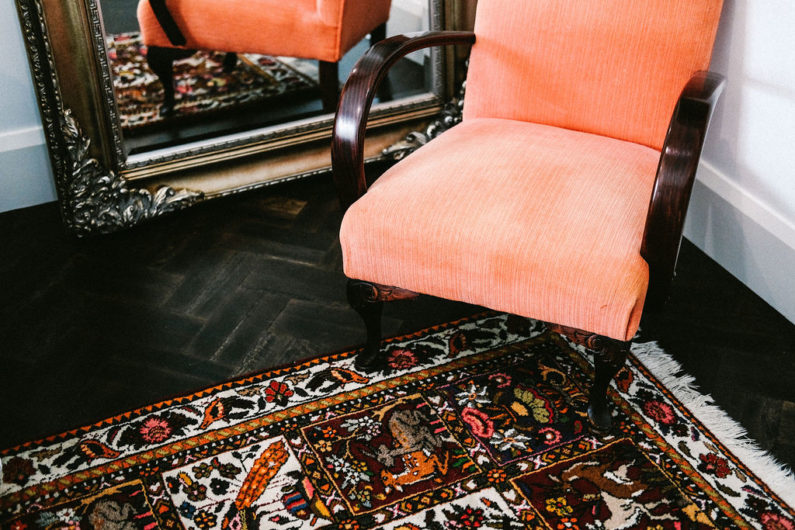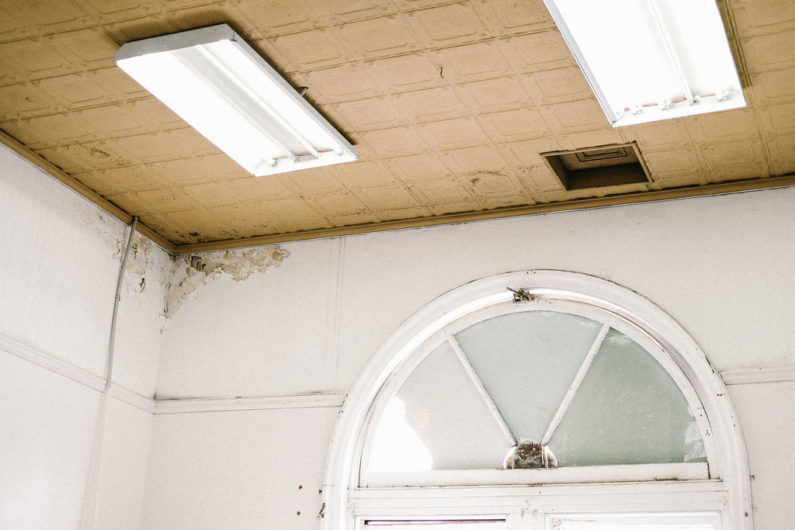One of the first times I met Tessa Mackay, it was about a month after the announcement that she’d won the 2019 Archibald Packing Room Prize. We were at the launch of an organisation dedicated to women artists, meaning, quite frankly, Tessa had a lot of new fans in the room. I watched her receive so humbly the repeated congratulatory outpourings, laughing widely as she spoke in depth to each person who approached her with equal enthusiasm. I knew instantly: this is a person who lives from the heart.
Tessa’s prize-winning Through the looking glass, a portrait of beloved Australian actor David Wenham gazing out the window of a Sydney café (which is, it’s worth noting, about two by three metres in size) captivated head packer Brett Cuthbertson. He has led the packing team at the Art Gallery of New South Wales for some thirty years.
The hyperrealist began attracting acclaim with her emotional large-scale portraits of members of the Mowanjum Aboriginal Community in the Kimberley. Though her subjects have since diversified, Tessa’s approach to “The Portrait” remains consistent: it’s a process of revealing.
We’re not technically at your home today, but at a home of sorts here in the Moores Building. Do you draw lots of inspiration from the Fremantle artistic community?
Absolutely. There’s so much comradery here. There’s a huge variety of artistic circles and an artistic fraternity, between all ages and walks of life. It’s the most nurturing environment – and also, it’s just so weird as well. It’s full of eccentric people, it makes you feel a lot more accepted and free. Particularly when you go a bit down the rabbit hole with your work and that obsession makes you feel a bit estranged from others. There’s also a lot of characterful buildings around here, which tend to be used by locals for lots of different events so there’s always something happening, something to see or do and feel a part of.
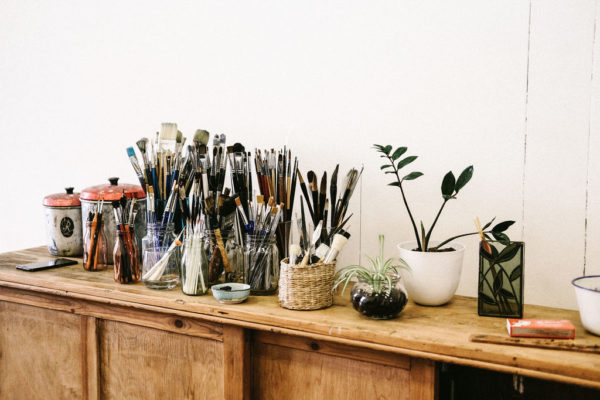
You’ve just won a major art prize. How have you found navigating the win?
The whole experience of having my work received so well has just been such a surprise for me. I really never had any expectation of it. I am so humbled. It’s incredibly gratifying to know that people are receiving my art in a certain way, which has allowed me to be more comfortable and confident within myself in a way that I really haven’t before.
How much positive reinforcement do you generally receive as an artist?
Positive reinforcement can be found in many places. Friends and family are a huge support, which keeps you alive and grounded. When I am painting a large work, I tend to spend a lot of time by myself, which after a while is really difficult, so having loved ones around to connect with keeps me grounded and positive. Art prizes for sure can provide positive reinforcement, although they’re fickle. Sometime the positive reinforcement comes as a byproduct from collecting your rejection slips. Laughs. Amongst artists though, the support is amazing. I found that with the Archibald, everyone was supportive, from the artists, to the trustees and the staff. I think they truly understand the reality that artists face and how hard and frustrating submitting work can be.
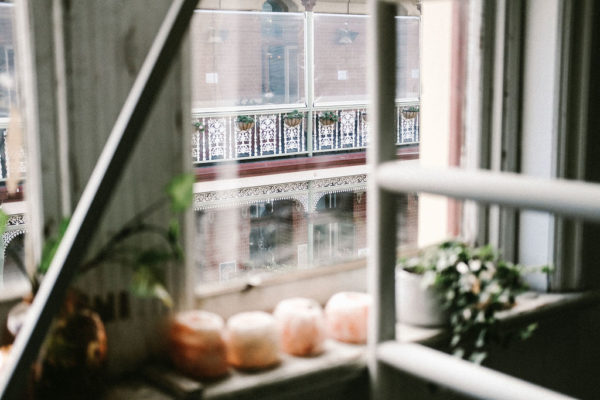
The Packing Room Prize is quite unique. It’s like the “first impressions prize”. Does that make it a more unique experience to win?
Well, having the support and respect of the people who are unpacking works at the gallery is really meaningful. Brett’s been there for about thirty years and he would’ve seen so many works coming through, so to know that he has a certain respect for my work is very humbling. I’m very lucky.
You’ve worked on portraits for most of your professional career. When did that become your main form of expression and why?
I never really set out to make portraits, but I came into it when I went up to Mowanjum community. I formed friendships with the Aboriginal community members up there and kept returning to volunteer and spend time. I was a part of on country trips, school holiday programs, etcetera. In a way I was wanting to share those experiences with people back here in Perth, and to provide a way for people to engage with Indigenous culture, even if it was just through a painting. I don’t think many people in cities (myself included) have had lots of opportunities to form meaningful relationships with Indigenous people. These connections are something I feel really passionate about. Portraiture is such a wonderful way to communicate, because you sit in someone’s aura and observe and store your own thoughts, and connect. It’s a really open experience. That’s also where the hyperrealism came in – I wanted to portray the subject in the most engaging, honest way possible, using bright colours and highlighting striking features, like the eyes. That style really seems to resonate with people, which made me realise that there’s some meaning in this, and seeing how people engaged was something I really enjoyed.
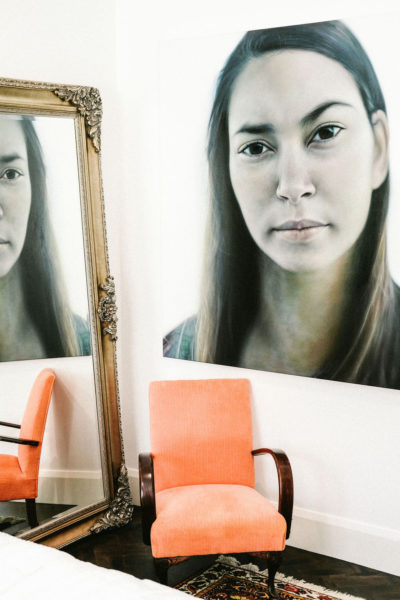
In a world where people are capturing their lives in more detail than ever before, how hard is it to capture a single moment in time with someone, in paint, that has weight? What is the state of the portrait in the contemporary era?
There are so many facets to that. Laughs. There is the artist’s preconceived ideas that come into play – they have an idea of what they want to create, like it or not. But how do they draw that out from the subject, and is the subject willing to present that? June Rae, an award winning artist and a highly commended Archibald finalist this year, talks about her subjects, and her and I agree that we have to wait for subjects to present something, to give something. That involves spending enough time with a subject to foster a really open environment with the person, stimulating conversation and openness. She paints and draws often from life. From my own experience, painting and drawing is a really wonderful tool to foster openness. It’s a practice that you can share in together – even though the subject is just sitting there, they’re connected to what you’re putting on paper. You notice the shoulders starting to soften pretty early on. When I was learning how to make portraits, I was figuring out how to make a portrait more than just a painting of a person, or an exact copy of a photograph. It was clear to me that there needed to be more work involved to achieve this. It’s so easy these days to just take a photo and then paint it, and in hyperrealism, there tends to be an attachment to things that are beautiful and impressive. Sometimes I find it frustrating because portraiture is such a powerful medium for presenting something beyond just what looks good.
It’s something that’s quite intuitive.
Yeah! And I’m really not a conceptually-minded person at all, but my husband has a knack for it and I’m really lucky that he helps me with that. My whole family have guided my work a lot. I used to paint portraits with no context, I would just paint a white or black background, knowing that I didn’t understand the connection between the subject and what else was going on and wasn’t sure how to expand from that. I feel really fortunate that support from my family helped me see that connection, and bring context into my portraits.
Do you think it’s a new phenomenon to try to produce portraits that are simply beautiful?
Yes. It’s because of social media.
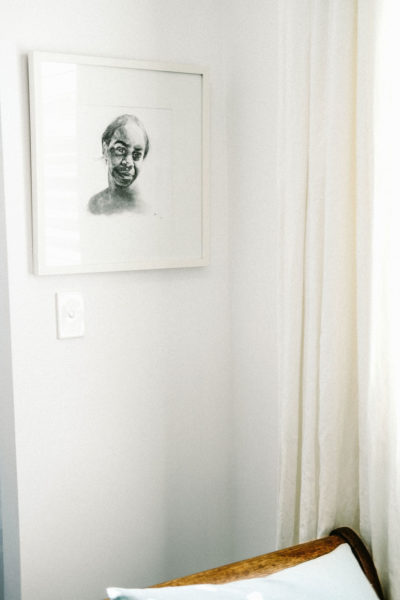
Laughs. Tell me about the influence of social media on art today.
Oh gosh. Laughs. Well, in a nutshell, in relation to hyperrealism – many hyperrealists learn the style by seeing examples set by other artists. That’s great, but with Instagram for example, my feed is full of #hyperrealism being used, really, as just a buzz word. Sometimes I see things that I can’t help but think are ridiculous. Hyperrealism is popular at the moment – it came up in the 70’s in the States, mainly because of photography, and it’s just evolved since then. But it’s accelerating at the moment, and it seems to be going through a bit of a teenage phase at the moment. I would love to see more meaning being teased out of the style because I think it has the capacity for it. You can create a real sense for the person through hyperrealism, and it’s an incredibly popular, accessible style of art. It would be great to see more hyperreal portraits be painted to serve a kind of purpose or spread positive awareness. To just have a beautiful painting of a model is fun and indulgent, but it can become narcissistic, and even escapist, because it takes so much time to paint. They’re awesome to look at but I don’t understand the purpose of these works. I feel like I’m being a nag now. Laughs.
So what is the value of a truly meaningful portrait in this style?
It can make us think. It can make us connect with people we’ve never met in our whole lives. It sparks conversation. When you have a subject there, and you start drawing, these conversations just come out, people can become so honest and vulnerable. And that can be transmitted through the work. How people interpret that is up to them, but the opportunity is there.
A true portrait is an uncovering, rather than a means of covering up.
Yeah. Some portraits are about truth telling, and are there to reveal the subject or to reveal something in us when we view them. It’s certainly different for everyone but that’s where I get my kicks from with portraiture.
Take me right back to when you started painting. Where did your love for it come from? When did you realise you were good?
I really never thought I was good. I was constantly trying to improve. I did art at school but it wasn’t the right fit for me – too theory-based. I went to a place called Claremont School of Art, where classes were taught by working artists. This old Maori man called Richard Merito taught me how to see. He is an incredible artist! He’d run charcoal life drawing sessions, and sculpting workshops which tends to be really complimentary for drawers and painters. He taught us to see light and dark, tones and shape. I was also taught by Drewfus Gates who’s a renowned painter in Perth, who taught me how to see colour. Lesson one: you never really use black because it kills the work. Just use dark purples or blues! If I need to I use painter’s grey because it at least has a blue hue to it. He taught me how to build foundations. These were just eight week courses. A lot of the students were older. I’d often skip a day of school to go to Richard’s life drawing sessions. I started going when I was 15. The first one I ever went to, I was running late. Mum dropped me off and Richard was there, and he ran out to mum and said, “I’m so sorry. We have a male model today. Is that ok?” Mum was like, “She’ll be fine!” Sure enough, the only seats available were right in front of this model, sitting down, semi-spread. I was thinking, “what have I gotten myself into?”. But I loved those drawing classes. Having an art teacher that believed in me made a big difference. I did also go to Curtin where I studied Fine Arts, but I really struggled with it. I deal with dyslexia, which has impacted my course as an artist. No matter how hard I tried at the written assignments, there wasn’t enough support to get me through an art degree. But it did force me to decide for myself what direction I went in.
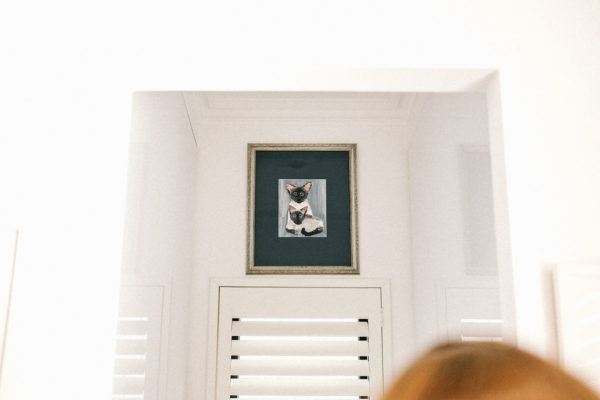
What are some of the major challenges you’ve faced in turning your passion for art into a professional career?
The major challenges all come from myself. The fears and struggles I have with various parts of this job. Obvious ones are anything to do with writing or numbers. Since you’re driving it yourself, it’s so easy to go with the path of least resistance and to simply stay in your safe place, which for me is to paint. But for instance, I also need to be able to apply for grants, write about my work, submit applications, and organise exhibitions. I really have to work hard at these things, and I certainly couldn’t do it alone. My husband is a huge help on all fronts and I’m very fortunate to have the support of a network of people who are amazing at these components also. My brain also isn’t naturally wired to be strategic, and thinking about potential ramifications or greater perspective. I have to be mindful of this. For me at least, it’s about being curious about challenges and learning to be a dynamic human. And there’s growth in some pain.
And what about creatively?
When I decided I wanted to paint in this style, I decided to dedicate myself totally to learning how to technically achieve the style. Once I had a basic understanding of that way of seeing, I wanted to paint large. So I had to figure out the logistics of that. Trevor Jamieson (Wongatha Pitjantjatjara man) was my first portrait in a large format style – measuring 290 by 290 centimetres. He’s Australia’s foremost Indigenous actor, following in the footsteps of David Gulpilil. The next step was challenging not just the face, but other shapes in my work – geometric objects, organic life, still life. That was another thing in itself. And now all of a sudden, I have all this work, but I don’t know how to promote and sell it. Laughs. So the next challenge is to figure out how to market and exhibit my work.

As a young female artist, what do you think you can contribute to the broader conversation being had through art?
I mean, I’m not really trying to prove anything. But I do think that, fortunately, I’m in a space and a time in history where I can contribute something unique. Women’s voices have been sort of swept under the rug and, for so many reasons, women aren’t always visible as artists. Examples aren’t set for us. If I can start to make people more conscious of that, that’d be great. Young people – young painters – who aspire to master what they love to do, they’ll be looking at the walls of these institutions that showcase artworks as examples. So we need to be sure that we’re representing everyone equally.
The portrait referred to in this interview and pictured above, Trevor Jamieson (Wongatha Pitjantjatjara man), is currently available for acquisition.
https://www.artgallery.nsw.gov.au/media-office/winner-2019-archibald-packing-room-prize/


